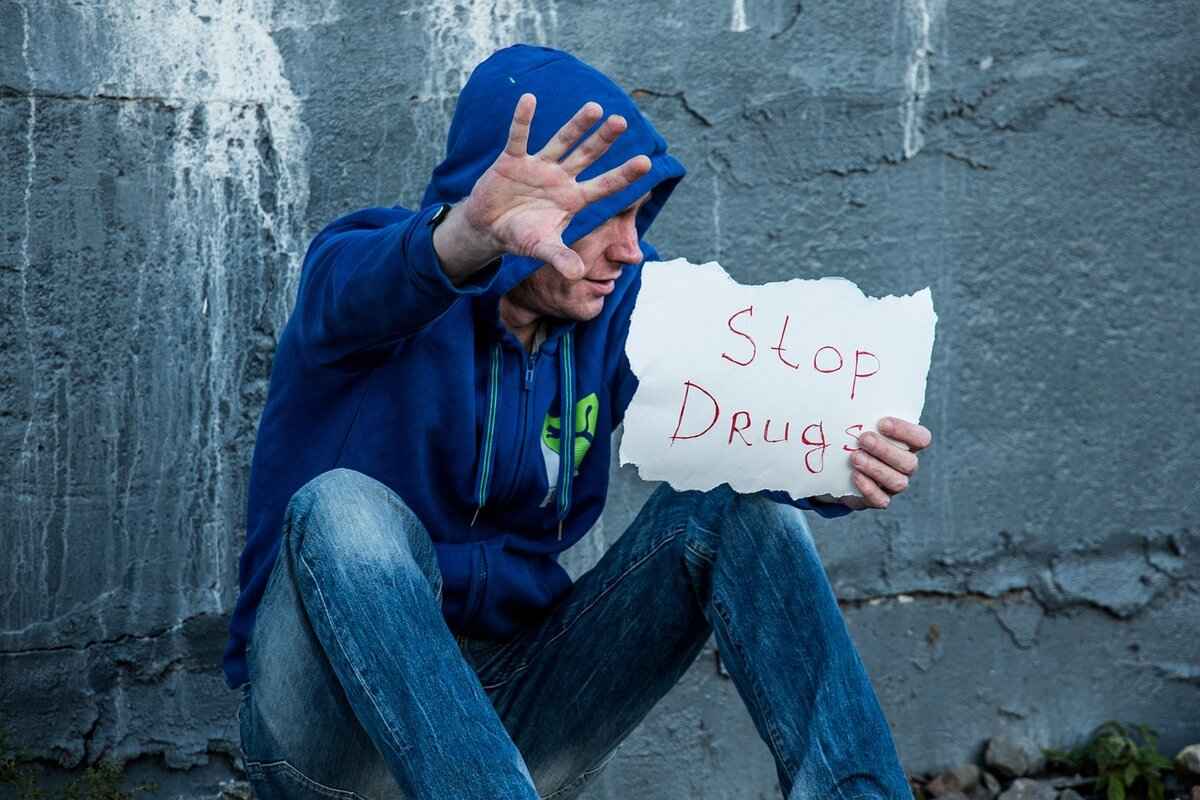This article delves into the intricate landscape of drug-related crimes in the United States, examining the various penalties that accompany these offenses. It covers the types of offenses, the sentencing guidelines, and the multifaceted factors that influence penalties, providing a comprehensive overview for those seeking to understand this critical aspect of the legal system.
Understanding Drug-Related Crimes
Drug-related crimes represent a broad spectrum of illegal activities, including possession, distribution, and manufacturing of controlled substances. Each category carries distinct legal repercussions, making it essential to grasp their differences to navigate the complexities of the law.
Types of Drug Offenses
- Possession of Controlled Substances: This can range from minor misdemeanors to serious felonies, depending on the type and quantity of the substance involved.
- Distribution: Selling or distributing drugs often results in harsher penalties compared to simple possession.
- Trafficking: Involves large-scale distribution and often incurs the most severe penalties due to its impact on public health and safety.
Possession of Controlled Substances
Charges for possession can vary significantly. For instance, possessing a small amount of marijuana may result in a fine or probation, while possession of a large quantity of heroin could lead to years of imprisonment. The distinction between simple possession and possession with intent to distribute is crucial, as the latter typically incurs more severe penalties due to the perceived threat to community safety.
State vs. Federal Charges
The jurisdiction of the offense plays a significant role in determining penalties. Federal drug offenses often carry more severe consequences than state-level offenses, reflecting the seriousness of trafficking across state lines. For example, federal law imposes mandatory minimum sentences for certain drug offenses, which can lead to lengthy prison terms.
Factors Influencing Sentencing
Several factors can influence the severity of penalties for drug-related crimes:
- Prior Criminal History: Repeat offenders often face enhanced penalties, as the legal system aims to deter recidivism.
- Aggravating Circumstances: Factors such as the involvement of minors, use of firearms, or operating within a school zone can elevate the severity of charges and penalties significantly.
Potential Penalties for Drug Offenses
The penalties for drug offenses can include:
- Fines: These can vary widely depending on the offense, with some states imposing substantial monetary penalties.
- Probation: Offenders may be eligible for probation or rehabilitation programs, allowing them to receive treatment for substance abuse while avoiding incarceration.
- Imprisonment: For serious offenses, imprisonment may be the primary consequence, with sentences ranging from a few months to several decades.
Legal Defenses Against Drug Charges
Defendants in drug-related cases may explore various legal defenses, including:
- Challenging Evidence: If evidence was obtained through unlawful searches, it may be possible to have the charges dismissed.
- Duress and Entrapment: Defendants may argue that they were coerced into committing a drug offense or manipulated by law enforcement.
Impact of Drug Laws on Communities
The enforcement of drug laws has profound implications for communities. It influences crime rates, public health, and social justice issues, igniting ongoing debates about reform. Communities are increasingly focusing on health initiatives aimed at addressing substance abuse through prevention and treatment rather than solely punitive measures.
Calls for Drug Law Reform
There is a growing movement advocating for drug law reform, aiming to reduce penalties for non-violent drug offenses and promote restorative justice practices. This reflects a shift towards understanding drug addiction as a public health issue rather than merely a criminal one.

Understanding Drug-Related Crimes
Drug-related crimes represent a significant area of concern within the legal system, encompassing a wide array of offenses that can vary greatly in terms of severity and legal consequences. Understanding these crimes is essential for anyone navigating the complexities of the legal landscape surrounding controlled substances. This section delves into the various categories of drug-related offenses, the legal implications of each, and the importance of awareness in addressing these issues.
Categories of Drug-Related Crimes
- Possession: This refers to the unlawful holding of controlled substances, which can range from small amounts for personal use to larger quantities that suggest intent to distribute.
- Distribution: This involves the selling or transferring of controlled substances, often resulting in more severe penalties due to the potential harm to public health.
- Manufacturing: The production of illegal drugs, which can include anything from small-scale home operations to large, organized drug trafficking operations.
Each of these categories carries different legal repercussions, influenced by factors such as the type of substance involved, the amount in possession, and the offender’s prior criminal history.
The Importance of Understanding Drug Laws
Understanding the nuances of drug-related crimes is crucial for several reasons. Firstly, it allows individuals to be aware of their rights and the potential consequences they may face if charged with an offense. Secondly, it aids in recognizing the broader implications of drug laws on society, including public health and safety issues.
For instance, possession of a small amount of marijuana may be treated differently in states that have legalized its use compared to those where it remains illegal. This discrepancy highlights the importance of being informed about local laws and regulations.
Legal Repercussions of Drug Offenses
The legal repercussions for drug-related crimes can be severe, often resulting in hefty fines, probation, or imprisonment. The specific penalties can vary significantly based on the jurisdiction and the nature of the offense. For example:
| Type of Offense | Potential Penalties |
|---|---|
| Simple Possession | Misdemeanor charges, fines, probation |
| Possession with Intent to Distribute | Felony charges, longer prison sentences, higher fines |
| Drug Trafficking | Severe felony charges, significant prison time, substantial fines |
Conclusion
In summary, drug-related crimes encompass a spectrum of offenses that carry varying levels of legal repercussions. Understanding these categories is vital for individuals facing charges, as well as for those interested in the broader societal implications of drug laws. By staying informed and aware of the legal landscape, individuals can better navigate the complexities of drug-related offenses and their consequences.

Types of Drug Offenses
Drug offenses represent a significant area of concern within the legal framework of the United States, affecting countless individuals and communities. Understanding the various types of drug offenses is essential for navigating the complexities of the legal system. This section delves into the classification of drug offenses, their associated penalties, and the implications for those charged.
Classification of Drug Offenses
Drug offenses can be broadly categorized into several types, each carrying distinct legal repercussions. The most common categories include:
- Possession: This refers to the unlawful possession of controlled substances, which can be classified further into simple possession and possession with intent to distribute.
- Trafficking: Involves the illegal trade of drugs, typically on a larger scale, and carries severe penalties due to its impact on public health and safety.
- Distribution: The act of selling or distributing controlled substances, which can lead to serious legal consequences depending on the quantity and type of drug involved.
- Manufacturing: Refers to the illegal production of controlled substances, often subject to stringent penalties due to the potential harm to society.
Possession of Controlled Substances
Possession charges vary significantly based on the type and amount of substance involved. For instance, simple possession of a small amount of marijuana may result in a misdemeanor charge, while possession of larger quantities or more dangerous drugs like cocaine or heroin can elevate the charge to a felony. Penalties for possession may include:
- Fines that can range from hundreds to thousands of dollars.
- Probation, which may involve regular check-ins with a probation officer and mandatory drug testing.
- Imprisonment, with sentences varying from a few months to several years based on the severity of the offense.
Intent to Distribute
Charges of possession with intent to distribute are treated more seriously than simple possession. Law enforcement may consider various factors, such as the amount of drugs, packaging, and the presence of scales or other distribution tools, to determine intent. The penalties for these charges are significantly harsher, potentially leading to lengthy prison sentences and substantial fines.
State vs. Federal Charges
The jurisdiction under which a drug offense is prosecuted can greatly affect the penalties. Federal drug laws are generally stricter than state laws, often resulting in more severe consequences for offenses that cross state lines. For example, trafficking drugs across state borders can lead to federal charges that carry mandatory minimum sentences.
Distribution and Trafficking Charges
Distribution and trafficking are among the most serious drug offenses. The penalties for these crimes are based on various factors, including:
- The type of drug involved, with substances classified under schedules that denote their potential for abuse.
- The quantity of drugs, where larger amounts typically result in more severe penalties.
- Whether the offense involved minors or was committed in a school zone, which can enhance penalties.
Understanding the types of drug offenses and their potential consequences is crucial for anyone involved in or affected by drug-related issues. Legal representation is often essential in navigating these complex laws and advocating for fair treatment under the law.
Possession of Controlled Substances
Possession of controlled substances is a serious offense in the United States, with legal implications that can vary significantly based on several factors. These factors include the type and amount of substance involved, the offender’s criminal history, and the jurisdiction in which the offense occurs. Understanding the nuances of possession charges is essential for anyone facing such allegations.
In general, possession charges can range from misdemeanors to felonies. Misdemeanor possession typically involves smaller amounts of less severe drugs, such as marijuana in states where it remains illegal. In contrast, felony possession usually pertains to larger quantities or more dangerous substances like cocaine or heroin. For example, possessing a small amount of marijuana may lead to a misdemeanor charge, while possessing a significant amount of cocaine could result in a felony charge.
The penalties for these offenses can be severe. Common consequences include:
- Fines: Monetary penalties can vary widely, with some states imposing hefty fines that may range from hundreds to thousands of dollars.
- Probation: Instead of serving time in jail, offenders may be placed on probation, which often involves regular check-ins with a probation officer and adherence to specific conditions.
- Imprisonment: In more serious cases, especially felonies, individuals may face significant jail time, which can range from a few months to several years.
Moreover, the distinction between simple possession and possession with intent to distribute is crucial. Simple possession typically carries lighter penalties, while possession with intent to distribute can lead to much harsher sentences. Law enforcement agencies often look for indicators of intent to distribute, such as the quantity of drugs, packaging materials, or the presence of scales.
Another significant aspect of possession charges is the difference between state and federal charges. Federal drug laws are generally more stringent, and federal penalties can be more severe than those imposed at the state level. For instance, federal authorities may pursue charges for drug trafficking that crosses state lines, which can lead to mandatory minimum sentences.
Several factors can influence the severity of penalties for possession charges. Prior criminal history plays a significant role; individuals with previous drug-related convictions may face enhanced penalties as a deterrent against recidivism. Additionally, aggravating circumstances, such as possession near schools or involving minors, can elevate the charges and lead to stricter consequences.
Understanding the potential legal defenses against possession charges is also vital. Defendants may challenge the legality of searches and seizures, arguing that evidence was obtained unlawfully. If successful, this can lead to the dismissal of charges. Other defenses may include demonstrating a lack of knowledge about the presence of the drugs or arguing that the drugs belonged to someone else.
In conclusion, navigating the complexities of possession of controlled substances requires a comprehensive understanding of legal definitions, potential penalties, and defense strategies. Individuals facing possession charges should seek legal counsel to explore their options and ensure their rights are protected.
Simple Possession vs. Intent to Distribute
When discussing drug-related offenses, it is essential to understand the significant differences between simple possession and possession with intent to distribute. These two categories not only differ in their legal definitions but also in the severity of the penalties associated with each.
Defining Simple Possession
Simple possession refers to the act of having a controlled substance for personal use. This charge is generally considered less severe and is often classified as a misdemeanor in many jurisdictions. The penalties for simple possession can include:
- Fines: Depending on the state, fines can range from a few hundred to several thousand dollars.
- Probation: Offenders may be placed on probation, allowing them to avoid incarceration while complying with specific conditions.
- Mandatory Drug Counseling: Courts may require participation in rehabilitation programs aimed at addressing substance abuse.
Understanding Possession with Intent to Distribute
On the other hand, possession with intent to distribute implies that an individual has a controlled substance with the purpose of selling or distributing it to others. This offense is viewed more seriously due to its potential threat to public safety and community health. The penalties can be significantly harsher, often classified as a felony. Possible consequences include:
- Lengthy Imprisonment: Sentences can range from a few years to decades, depending on the quantity and type of drug involved.
- Severe Fines: Offenders may face substantial monetary penalties that can reach tens of thousands of dollars.
- Criminal Record: A felony conviction can have lasting impacts on an individual’s life, affecting employment opportunities and housing options.
Factors Influencing Sentencing Severity
The legal system considers various factors when determining the severity of penalties for drug offenses. For instance, the quantity of the substance plays a crucial role; larger amounts of drugs typically lead to harsher sentences. Additionally, the presence of aggravating factors, such as prior convictions or involvement of minors, can elevate the penalties associated with possession with intent to distribute.
The Role of State vs. Federal Law
It’s important to note that penalties can also vary based on whether the charge is at the state or federal level. Federal laws tend to impose stricter penalties for drug trafficking and distribution, reflecting the government’s efforts to combat drug-related crimes across state lines. For instance, federal sentencing guidelines often result in mandatory minimum sentences that can significantly increase the time an offender spends incarcerated.
Public Perception and Legal Trends
There is a growing recognition of the need for reform in how drug offenses are prosecuted. Advocacy groups argue that simple possession should not carry the same weight as intent to distribute, especially for non-violent offenders. This shift in perception is leading to discussions about decriminalization and restorative justice practices, which aim to address the root causes of drug addiction rather than solely focusing on punitive measures.
In conclusion, understanding the differences between simple possession and possession with intent to distribute is crucial for anyone navigating the legal landscape of drug-related offenses. By recognizing the implications of each charge, individuals can better prepare for the potential legal consequences they may face.
State vs. Federal Charges
The legal landscape surrounding drug-related offenses in the United States is complex, particularly when distinguishing between state and federal charges. Understanding these differences is crucial for anyone involved in or affected by drug laws, as the jurisdiction can significantly impact the severity of penalties imposed.
Differences in Jurisdiction
Drug offenses can be prosecuted at both the state and federal levels, with each jurisdiction having its own set of laws and penalties. Generally, state charges pertain to violations of state laws, while federal charges involve violations of federal statutes. The key distinction lies in the nature of the crime and its broader implications. For instance, drug trafficking across state lines typically falls under federal jurisdiction due to its interstate nature, which is viewed as a serious threat to public safety.
Severity of Penalties
Federal charges often carry more severe penalties compared to their state counterparts. This is largely due to the federal government’s stance on drug trafficking, which is considered a significant public health issue. For example, a person convicted of federal drug trafficking could face a mandatory minimum sentence of several years, depending on the type and quantity of drugs involved. In contrast, state-level offenses might result in lighter sentences, such as probation or shorter prison terms, especially for first-time offenders.
Sentencing Guidelines
Sentencing guidelines further highlight the disparities between state and federal charges. Federal sentencing guidelines are often more rigid, providing less discretion for judges compared to state laws. This means that individuals facing federal charges may find themselves with limited options for leniency or alternative sentencing, such as drug rehabilitation programs, which are more commonly available at the state level.
Factors Influencing Federal Charges
- Type of Drug: The classification of the drug (e.g., Schedule I, II) can significantly affect the penalties. Federal law categorizes drugs based on their potential for abuse and medical use.
- Quantity: The amount of drugs involved in the offense can escalate the severity of the charges. Larger quantities often trigger mandatory minimum sentences.
- Criminal History: Repeat offenders face harsher penalties under federal law, which aims to deter recidivism.
Impact on Legal Strategy
The jurisdictional differences necessitate distinct legal strategies. Defendants facing federal charges should work with attorneys experienced in federal law, as the implications of a federal conviction can be long-lasting, affecting employment opportunities and civil rights. State charges may allow for more flexibility in plea bargaining and alternative sentencing options.
Community Implications
The disparities between state and federal drug laws also have broader implications for communities. Federal enforcement often leads to increased incarceration rates, particularly among marginalized populations, raising concerns about social justice and the effectiveness of punitive measures. In response, many communities advocate for reform, pushing for policies that prioritize treatment over punishment.
In summary, the distinction between state and federal drug charges is pivotal in determining the legal consequences faced by individuals accused of drug-related offenses. The federal government’s stringent approach reflects the perceived severity of drug trafficking, emphasizing the need for informed legal representation and community awareness.
Distribution and Trafficking Charges
represent some of the most serious offenses within the realm of drug-related crimes in the United States. These charges not only involve the sale or distribution of controlled substances but also carry significant legal consequences that can vary depending on several factors.
When discussing distribution and trafficking, it is essential to understand the differences between the two. Distribution typically refers to the act of selling or distributing drugs, while trafficking encompasses a broader range of activities, including the importation and large-scale distribution of controlled substances. Both categories are taken seriously by law enforcement and prosecutors alike, often leading to severe penalties.
One of the primary factors influencing the severity of penalties for distribution and trafficking charges is the quantity of drugs involved. In many jurisdictions, the law stipulates that larger quantities of drugs will result in harsher penalties. For instance, trafficking in large amounts of substances like cocaine or heroin may lead to mandatory minimum sentences, which can range from several years to life imprisonment, depending on state and federal laws.
Additionally, the type of substance plays a crucial role in determining penalties. Certain drugs, classified as Schedule I or II substances, are viewed as more dangerous and carry heavier sentences than lower-scheduled drugs. The legal distinction between these classifications can significantly impact the outcome of a case.
| Drug Type | Possible Penalties |
|---|---|
| Cocaine | 5 to 40 years in prison |
| Heroin | 5 to life imprisonment |
| Marijuana | Up to 5 years |
Another critical element in these cases is the defendant’s intent. Prosecutors must establish whether the individual intended to distribute the drugs or merely possessed them for personal use. Charges can escalate dramatically if intent to distribute is proven, as this implies a greater risk to public safety and community health.
Furthermore, the legal landscape surrounding distribution and trafficking is influenced by jurisdictional differences. Federal charges, for example, often carry stiffer penalties than state charges due to the broader implications of drug trafficking across state lines. This means that individuals facing federal charges may encounter mandatory minimum sentences that state laws do not impose.
It’s also important to note that prior criminal history can significantly affect sentencing outcomes. Repeat offenders often face enhanced penalties, as the legal system aims to deter recidivism through stricter sentencing guidelines. Additionally, the presence of aggravating factors, such as the involvement of minors or the use of firearms during the commission of a drug offense, can further elevate the severity of charges.
In summary, distribution and trafficking charges are complex legal issues that carry serious implications for those accused. Understanding the nuances of these charges, including the type and quantity of drugs involved, the defendant’s intent, and jurisdictional differences, is crucial for anyone facing such allegations. Legal representation is essential in navigating these challenging waters, as the stakes are high and the consequences can be life-altering.

Factors Influencing Sentencing
The legal landscape surrounding drug-related crimes is complex and multifaceted. Understanding the is crucial for anyone involved in or affected by these laws. In this section, we will delve into the various elements that can affect the severity of penalties for drug offenses, providing a comprehensive overview to help clarify this intricate subject.
One of the most significant determinants of sentencing severity is the prior criminal history of the offender. Courts often view repeat offenders with less leniency, imposing harsher penalties to deter future criminal behavior. For instance, an individual with a previous drug conviction may face enhanced sentences, which can include longer prison terms or increased fines. This approach aims to reflect the ongoing risk that repeat offenders pose to society.
Another critical factor is the presence of aggravating circumstances. These can include:
- The involvement of minors in the drug trade
- Use of firearms during the commission of the crime
- Distribution of drugs within school zones
- Violence or threats of violence associated with the offense
When such circumstances are present, judges often impose stiffer penalties to address the heightened danger to public safety. For example, selling drugs near a school can lead to significantly increased sentences due to the potential harm to children.
The role an individual plays within the drug trade also significantly influences sentencing. Key players—such as those involved in manufacturing or trafficking large quantities of drugs—are likely to receive more severe penalties compared to individuals caught with small amounts for personal use. This differentiation reflects the legal system’s focus on targeting higher-level offenders who contribute to broader drug distribution networks.
Judges have considerable discretion when it comes to sentencing. While guidelines exist, the final decision can vary based on the unique circumstances of each case. Factors such as the judge’s perspective, the specific facts of the case, and the arguments presented by defense attorneys and prosecutors can all lead to different outcomes. This variability underscores the importance of having experienced legal representation.
In contrast to aggravating circumstances, mitigating factors can lead to reduced sentences. Examples include:
- First-time offenders who show genuine remorse
- Participation in rehabilitation programs
- Cooperation with law enforcement
Judges may consider these factors when determining an appropriate sentence, which can result in alternatives to incarceration, such as probation or community service.
The jurisdiction under which an individual is charged can also play a pivotal role in sentencing. Federal charges typically carry more severe penalties than state charges due to the broader implications of drug trafficking across state lines. Federal sentencing guidelines are often stricter, reflecting the government’s intent to combat drug-related crime on a national scale.
In summary, the factors influencing the severity of penalties for drug-related crimes are numerous and varied. Prior criminal history, aggravating circumstances, the offender’s role in the drug trade, and the jurisdiction of the charges all play crucial roles in determining outcomes. Understanding these elements is essential for anyone navigating the complexities of drug laws in the United States.
Prior Criminal History
The legal landscape surrounding drug-related crimes is complex and often influenced by various factors, one of which is an individual’s . Understanding how previous convictions can affect sentencing is crucial for anyone involved in the legal system, especially in the context of drug offenses.
Repeat Offenders and Enhanced Penalties
In the United States, the principle of recidivism plays a significant role in shaping the penalties for drug-related crimes. When an individual has been convicted of drug offenses in the past, the legal system often views them as more culpable due to their history. This can lead to enhanced penalties, which are stricter sentences imposed on repeat offenders. The rationale behind this is to deter individuals from reoffending and to protect society from habitual offenders.
Sentencing Guidelines and Prior Convictions
Sentencing guidelines vary significantly from state to state, but many jurisdictions implement a system where prior convictions can lead to increased sentencing ranges. For example, an individual convicted of a drug offense may face mandatory minimum sentences if they have previous drug-related convictions. This means that the court is required to impose a specific minimum sentence, which can drastically affect the outcome of the case.
Impact of Felony vs. Misdemeanor Convictions
Prior convictions can also differ in their impact depending on whether they are classified as felonies or misdemeanors. A felony conviction can lead to substantially harsher penalties than a misdemeanor. In many jurisdictions, a felony drug conviction can result in a longer prison sentence, while a misdemeanor may only lead to probation or a short jail stay. Therefore, individuals with a history of felony convictions face a more daunting legal landscape when charged with new offenses.
Judicial Discretion and Prior History
Judges often have discretion when it comes to sentencing, but prior convictions can influence their decisions. A judge may consider the nature of the previous offenses, the time elapsed since the last conviction, and any evidence of rehabilitation when determining the appropriate sentence. This means that individuals who can demonstrate substantial changes in their lives since their last conviction may receive more lenient sentences.
Aggravating Factors Related to Prior Convictions
In addition to the mere fact of having prior convictions, certain aggravating factors can further enhance penalties. For example, if the previous convictions involved violent behavior or significant quantities of drugs, this could lead to even stricter sentencing. Courts often view these factors as indicators of a greater risk to public safety, thus justifying harsher penalties.
Potential for Rehabilitation
Despite the challenges posed by a prior criminal history, there are opportunities for rehabilitation. Many jurisdictions offer diversion programs or drug courts that focus on treatment rather than punishment for individuals with substance abuse issues. These programs can provide a pathway to reduced sentences for eligible offenders, emphasizing the importance of addressing the underlying issues related to drug use.
Conclusion
In summary, an individual’s prior criminal history significantly influences the penalties associated with drug-related crimes. Understanding this aspect of the legal system is essential for anyone facing drug charges. By recognizing the potential consequences of past convictions, individuals can better navigate their legal options and seek appropriate legal counsel to address their specific circumstances.
Aggravating Circumstances
play a significant role in determining the severity of penalties for drug-related crimes. Various factors can enhance the seriousness of an offense, leading to more severe consequences for the offender. Understanding these circumstances is crucial for anyone facing drug charges, as they can dramatically alter the legal landscape surrounding a case.
One of the most serious aggravating circumstances is the involvement of minors. When drug offenses occur in the presence of individuals under the age of 18, the legal system often responds with heightened scrutiny. This is due to the potential for minors to be influenced or harmed by adult behavior, leading to increased penalties. For instance, selling drugs near a school or to a minor can result in significantly harsher sentences, reflecting society’s commitment to protecting its youth.
Another critical factor is the use of firearms during the commission of drug offenses. The presence of a weapon not only escalates the potential for violence but also indicates a greater level of criminal intent. Courts often impose stricter penalties for drug crimes involving firearms, as this combination poses a serious threat to public safety. Offenders may face additional charges related to illegal possession of a firearm, compounding their legal troubles.
Operating in a school zone is yet another aggravating circumstance that can elevate the severity of drug charges. Many jurisdictions have established “drug-free school zones,” where enhanced penalties apply to drug offenses committed within a certain distance from educational institutions. This legal framework aims to deter drug-related activities in areas frequented by children and adolescents, thereby increasing the stakes for offenders caught in such zones.
In addition to these specific circumstances, other factors can also play a role in aggravating drug charges. For example, the quantity of drugs involved can significantly influence sentencing. Larger quantities may suggest intent to distribute rather than personal use, which typically carries more severe penalties. Furthermore, an offender’s criminal history can also affect sentencing, with repeat offenders facing harsher consequences as a deterrent against recidivism.
Moreover, the type of drug involved can lead to different levels of severity in penalties. Controlled substances classified as more dangerous or addictive, such as heroin or methamphetamine, often result in stricter penalties compared to less harmful substances. The legal system takes into account the potential impact on public health and safety when determining appropriate sentences.
Understanding these aggravating circumstances is essential for anyone involved in drug-related legal issues. It highlights the importance of legal representation and the need for a comprehensive defense strategy. An experienced attorney can help navigate the complexities of the law, ensuring that all factors are considered in a case, potentially mitigating penalties or achieving a more favorable outcome.
Ultimately, the presence of aggravating circumstances can significantly influence the trajectory of drug-related cases. Awareness of these factors can empower defendants to make informed decisions about their legal strategies and the potential consequences they face. As drug laws continue to evolve, staying informed about the implications of aggravating circumstances remains vital for anyone engaged in the legal system.

Potential Penalties for Drug Offenses
The legal landscape surrounding drug offenses in the United States is complex and varies significantly by jurisdiction. Understanding the potential penalties associated with these offenses is crucial for individuals who may find themselves facing drug-related charges. Penalties can range from fines and probation to imprisonment, and the severity of these outcomes can depend on various factors, including the type of offense, prior criminal history, and the specific circumstances surrounding the case.
Types of Penalties
- Fines: Monetary penalties can vary widely, often depending on the nature of the offense. For example, possession of a small amount of marijuana may incur a minimal fine, while trafficking large quantities of narcotics can result in significant financial penalties.
- Probation: In some cases, offenders may be placed on probation instead of serving time in jail. This option often includes mandatory drug counseling and regular check-ins with a probation officer.
- Imprisonment: For more serious offenses, such as distribution or trafficking, imprisonment is a common penalty. Sentences can range from a few months to several years, depending on the severity of the crime and the offender’s criminal history.
Factors Influencing Penalties
Several factors can play a critical role in determining the penalties for drug offenses:
- Type of Drug: Different substances carry different penalties. For instance, offenses involving heroin or cocaine typically result in harsher penalties compared to those involving marijuana.
- Quantity of Drugs: The amount of controlled substance involved in the offense can significantly influence the severity of the penalty. Larger quantities often lead to more serious charges and longer sentences.
- Prior Convictions: Individuals with prior drug convictions may face enhanced penalties, as repeat offenders are often subject to stricter sentencing guidelines.
- Aggravating Circumstances: Factors such as the involvement of minors, the use of firearms during the offense, or the operation of drug activities near schools can elevate the severity of the penalties.
Legal Consequences of Drug Offenses
Understanding the legal consequences of drug offenses is essential for anyone facing charges. The repercussions can extend beyond immediate penalties:
- Criminal Record: A drug conviction can lead to a permanent criminal record, which may affect future employment opportunities, housing options, and personal relationships.
- Impact on Civil Rights: In some states, individuals convicted of drug offenses may lose certain civil rights, including the right to vote or possess firearms.
Conclusion
In conclusion, the penalties for drug offenses can be severe and multifaceted, affecting various aspects of an individual’s life. It is crucial for those facing drug-related charges to seek legal counsel to navigate the complexities of the legal system and understand their rights and options. By being informed, individuals can better prepare for the potential outcomes of their cases and make informed decisions moving forward.
Fines and Restitution
When it comes to drug-related crimes, understanding the potential is crucial for anyone facing charges. The financial implications of these offenses can be significant, and they often vary widely depending on several factors, including the nature of the crime, the jurisdiction, and the offender’s history.
Fines imposed for drug offenses can differ dramatically from one state to another. For instance, some states may impose minimal fines for simple possession, while others may levy substantial monetary penalties for the same offense. This disparity can be attributed to differing state laws and the prioritization of drug enforcement policies.
- Type of Offense: The severity of the drug charge plays a significant role in determining fines. Felony charges typically carry higher fines than misdemeanors.
- Quantity of Substance: Larger quantities of controlled substances often lead to higher fines, reflecting the increased potential harm to society.
- Prior Convictions: Repeat offenders may face enhanced fines as a deterrent against further violations.
- Aggravating Factors: Circumstances such as the involvement of minors or operating near schools can lead to increased fines.
Some states have established mandatory minimum fines for specific drug offenses, which judges are required to impose regardless of mitigating circumstances. This can lead to situations where individuals face substantial financial burdens even for relatively minor infractions.
In addition to fines, courts may order offenders to pay restitution to victims affected by their drug-related activities. This is particularly common in cases involving trafficking or distribution, where the impact on communities and individuals can be profound. Restitution is intended to compensate victims for losses incurred due to the offender’s actions.
Recognizing that fines can impose severe financial hardship, many jurisdictions allow offenders to set up payment plans to manage their fines over time. Courts may consider the offender’s financial situation when determining the payment schedule, allowing for greater flexibility.
Failing to pay fines can lead to serious consequences, including additional legal penalties. Offenders may face warrants for arrest or additional charges, further complicating their legal situation. It is essential for individuals facing fines to understand their obligations and seek legal advice if necessary.
Given the complexities surrounding fines and restitution in drug-related cases, obtaining legal representation is highly advisable. An experienced attorney can help navigate the legal landscape, advocate for fair treatment, and potentially negotiate reduced fines or alternative sentencing options.
In summary, fines and restitution for drug-related crimes can be substantial and vary widely based on numerous factors. Understanding these financial implications is essential for anyone involved in the legal process. Seeking expert legal counsel can significantly impact the outcome of a case, ensuring that individuals are informed of their rights and responsibilities.
Probation and Rehabilitation Programs
Probation and rehabilitation programs play a crucial role in the criminal justice system, particularly for individuals charged with drug-related offenses. These alternatives to incarceration not only aim to reduce prison overcrowding but also focus on addressing the underlying issues that contribute to substance abuse. In this section, we will delve into the specifics of probation and rehabilitation programs, their eligibility criteria, and their potential benefits for offenders and society alike.
Understanding Probation
Probation is a court-ordered period during which an offender is allowed to remain in the community under the supervision of a probation officer instead of serving time in jail. This option is often available for those who have committed non-violent drug offenses or who show potential for rehabilitation. The decision to grant probation typically depends on several factors, including:
- The nature and severity of the offense
- The offender’s criminal history
- Evidence of substance abuse issues
- Willingness to participate in treatment programs
Rehabilitation Programs as an Alternative
Rehabilitation programs are designed to provide offenders with the necessary support and resources to overcome their substance abuse issues. These programs often include:
- Counseling and therapy sessions
- Support groups, such as Narcotics Anonymous
- Education on substance abuse and its effects
- Job training and placement services
By participating in these programs, offenders can address the root causes of their addiction, which may ultimately reduce the likelihood of reoffending.
Eligibility for Probation and Rehabilitation
Not all offenders are eligible for probation or rehabilitation programs. Courts typically consider factors such as:
- The type of drug offense
- The offender’s age and background
- Any previous attempts at rehabilitation
- Recommendations from legal counsel or treatment providers
For many individuals, successfully completing a rehabilitation program can lead to a reduction in their sentence or even dismissal of charges, depending on the jurisdiction and specific circumstances.
Benefits of Probation and Rehabilitation
Engaging in probation and rehabilitation programs offers several benefits, including:
- Reduced Recidivism: Studies show that individuals who participate in rehabilitation programs are less likely to reoffend compared to those who serve jail time.
- Community Integration: Offenders can maintain their ties to family and community, which is essential for successful reintegration into society.
- Cost-Effectiveness: Probation and rehabilitation programs are often less expensive for taxpayers than incarceration, making them a more sustainable option.
Challenges and Considerations
While probation and rehabilitation programs offer many advantages, they are not without challenges. Some offenders may struggle to comply with the conditions of probation, which can lead to violations and subsequent legal repercussions. Additionally, access to quality rehabilitation programs can vary significantly based on location and available resources.
Furthermore, societal stigma surrounding drug offenses can hinder individuals’ ability to reintegrate into their communities successfully. It is essential for communities to foster a supportive environment that encourages recovery and reduces discrimination against those who have faced drug-related charges.
In conclusion, probation and rehabilitation programs represent a vital component of the criminal justice system’s approach to drug-related offenses. By focusing on treatment and support rather than punishment, these programs aim to break the cycle of addiction and crime, ultimately benefiting both offenders and society as a whole.

Legal Defenses Against Drug Charges
Defendants facing drug-related charges in the United States have various legal defenses at their disposal. Understanding these defenses is crucial for anyone involved in a drug case, as they can significantly impact the outcome of the trial. This section explores several key defenses that can be employed to contest drug charges effectively.
- Challenging the Legality of Searches and Seizures
One of the most common defenses involves questioning the legality of the search and seizure that led to the discovery of drugs. Under the Fourth Amendment, individuals are protected against unreasonable searches. If law enforcement did not have a warrant or probable cause, any evidence obtained may be deemed inadmissible in court. This can lead to the dismissal of charges if the prosecution’s case relies heavily on that evidence.
- Lack of Knowledge
Another viable defense is the argument of lack of knowledge regarding the presence of illegal substances. Defendants can claim they were unaware that drugs were in their possession, a defense often applicable in cases involving shared spaces or vehicles. If the defendant can demonstrate that they had no reasonable way of knowing about the drugs, this may result in reduced charges or even an acquittal.
- Duress and Entrapment
Defendants can also argue that they were coerced into committing a drug offense through duress. This defense asserts that the defendant was forced to commit the crime under threat of harm. Similarly, the entrapment defense can be invoked if the defendant was induced by law enforcement to commit a crime they would not have otherwise engaged in. Both defenses require substantial evidence and credible testimony to be effective.
- Insufficient Evidence
In many cases, the prosecution’s case may hinge on circumstantial evidence. Defendants can challenge the sufficiency of this evidence, arguing that it does not meet the legal standard required for a conviction. If the prosecution cannot prove beyond a reasonable doubt that the defendant committed the offense, the charges may be dismissed.
- Constitutional Violations
Defendants may also explore potential violations of their constitutional rights during the arrest or investigation. This could include improper interrogation techniques or failure to inform the defendant of their rights (Miranda rights). Such violations can lead to the exclusion of key evidence and may significantly weaken the prosecution’s case.
- Medical Necessity
In some instances, defendants may argue that they possessed controlled substances for medical reasons. This defense, often used in cases involving marijuana or prescription drugs, requires the defendant to provide sufficient medical documentation to support their claims. The success of this defense can vary widely depending on state laws and the specifics of the case.
In conclusion, defendants have a range of legal defenses available when facing drug charges. By understanding and effectively utilizing these defenses, individuals can better navigate the complexities of the legal system and potentially mitigate the consequences of drug-related offenses.
Challenging Evidence
In the realm of criminal law, especially concerning drug-related offenses, the concept of plays a critical role in defending the rights of the accused. When individuals are charged with drug offenses, the legality of the evidence obtained during investigations can significantly influence the outcome of their cases. If evidence is gathered through unlawful searches, defendants have the right to challenge this evidence in court, potentially leading to the dismissing of charges.
Understanding the legal framework surrounding searches and seizures is essential. The Fourth Amendment of the United States Constitution protects citizens from unreasonable searches and seizures. This means that law enforcement must have probable cause and, in most cases, a warrant to conduct a search. If these conditions are not met, any evidence obtained can be deemed inadmissible in court. This principle is known as the exclusionary rule.
Defendants can employ various strategies when challenging evidence. One common approach is to file a motion to suppress, arguing that the evidence was obtained in violation of their constitutional rights. For instance, if police officers conducted a search without a warrant or probable cause, the defense can argue that any evidence found during that search should not be considered in the case. This could include drugs, paraphernalia, or any other incriminating materials.
Another important aspect of challenging evidence is the concept of fruit of the poisonous tree. This legal doctrine states that if the initial evidence was obtained unlawfully, any subsequent evidence derived from that initial evidence is also inadmissible. For example, if a suspect was coerced into providing a confession after an illegal search, that confession could be challenged as well.
Additionally, defendants can scrutinize the methods used by law enforcement during the search. If officers did not follow proper procedures or if there was a lack of reasonable suspicion, this could provide grounds for a successful challenge. Courts often consider the totality of the circumstances surrounding the search, including the officers’ actions and the context in which the search occurred.
Moreover, defendants can also argue that they had a reasonable expectation of privacy in the area searched. This expectation can vary based on the location, such as a private residence versus a public area. If the defense can establish that the search violated the defendant’s reasonable expectation of privacy, it strengthens their case for challenging the evidence.
In cases where evidence is successfully challenged, the implications can be significant. If the court rules that the evidence is inadmissible, it may lead to the dismissal of charges or a reduction in the severity of the case against the defendant. This outcome underscores the importance of having skilled legal representation to navigate the complexities of drug-related charges and the associated evidentiary challenges.
In conclusion, the ability to challenge evidence obtained through unlawful searches is a fundamental right for defendants in drug-related cases. By understanding the legal protections afforded by the Constitution and employing effective defense strategies, individuals can significantly impact the trajectory of their cases. As the legal landscape continues to evolve, staying informed about one’s rights and the intricacies of legal procedures remains crucial for anyone facing drug charges.
Duress and Entrapment Defenses
are critical legal concepts in the realm of criminal law, particularly in cases involving drug offenses. These defenses can provide a pathway for defendants to argue that their actions, while technically illegal, were not a result of their free will. Understanding these defenses is essential for anyone facing drug-related charges, as they can significantly influence the outcome of a case.
What is Duress? Duress refers to a situation where an individual commits a crime because they are under immediate threat of violence or harm. For a duress defense to be successful, the defendant must demonstrate that:
- They were faced with an imminent threat of serious bodily harm or death.
- They had no reasonable opportunity to escape the situation.
- The criminal act was directly related to the threat they faced.
This defense is particularly relevant in drug offenses where individuals may be coerced into transporting or distributing drugs under the threat of violence. For example, if a person is forced at gunpoint to deliver drugs, they may invoke duress as a defense.
Understanding Entrapment is equally important. Entrapment occurs when law enforcement officials induce a person to commit a crime that they would not have otherwise committed. The key elements of an entrapment defense include:
- The defendant was not predisposed to commit the crime.
- Government agents engaged in conduct that would induce a reasonable person to commit the offense.
For instance, if an undercover officer pressures an individual into selling drugs, this may constitute entrapment. The defense can argue that the defendant was manipulated into committing an offense they would not have pursued on their own.
Legal Implications of Duress and Entrapment are significant. If a court accepts a duress or entrapment defense, it can lead to a complete dismissal of charges or a reduction in penalties. However, these defenses are not easily proven and often require substantial evidence, including witness testimonies and documentation. Legal counsel is crucial in navigating these complex arguments.
Challenges in Proving Duress and Entrapment often arise, particularly in drug-related cases. Prosecutors may argue that the defendant had an opportunity to escape or that they were willing participants in the crime. This is why it is essential for defendants to gather as much evidence as possible to support their claims. Video recordings, text messages, or witness statements can all play a vital role in substantiating a defense of duress or entrapment.
Conclusion: Understanding the nuances of duress and entrapment defenses is essential for anyone involved in drug-related legal issues. These defenses can provide critical avenues for contesting charges, but they require careful legal strategy and robust evidence. Engaging with a knowledgeable attorney can help defendants navigate these complex legal waters effectively.

Impact of Drug Laws on Communities
The is profound and multifaceted, influencing various aspects of society, including crime rates, public health, and social justice. As communities grapple with the consequences of stringent drug enforcement policies, the need for reform has become a central issue in public discourse.
One of the most significant effects of drug law enforcement is the alteration of crime rates. In areas where drug laws are strictly enforced, there can be a noticeable increase in arrests and incarceration rates. This often leads to overcrowded prisons and strains on the criminal justice system. Moreover, the focus on punitive measures can divert resources away from addressing the root causes of drug abuse, such as poverty and lack of access to education. Consequently, communities may see a rise in violent crime associated with the drug trade as individuals resort to illegal means to sustain their habits or income.
Furthermore, the enforcement of drug laws has far-reaching implications for public health. Rather than treating substance abuse as a health issue, many jurisdictions approach it through a criminal lens. This has resulted in limited access to treatment programs for individuals struggling with addiction. Instead of receiving the help they need, many individuals face incarceration, which can exacerbate health issues and lead to a cycle of recidivism. The stigma associated with drug offenses further complicates recovery efforts, making it difficult for former offenders to reintegrate into society.
In recent years, there has been an increasing recognition of the need for social justice reform in drug laws. Marginalized communities, particularly those of color, have been disproportionately affected by aggressive drug enforcement tactics. This has sparked a national conversation about the inequities inherent in the current system and the urgent need for policy changes. Advocates argue that reforming drug laws could alleviate some of the systemic injustices faced by these communities, leading to a more equitable approach to drug-related issues.
As part of the movement towards reform, many communities are exploring health initiatives that prioritize prevention and treatment over punishment. Programs aimed at educating the public about substance abuse, providing access to mental health services, and offering rehabilitation options are becoming more prevalent. Such initiatives not only address the immediate needs of individuals struggling with addiction but also foster a healthier community overall.
In addition, there is a growing push for decriminalization and the reduction of penalties for non-violent drug offenses. By shifting the focus from punishment to rehabilitation, advocates believe that communities can better address the underlying issues of drug addiction. This approach seeks to eliminate the stigma surrounding drug use and encourage individuals to seek help without fear of legal repercussions.
Despite the challenges, the ongoing discussions about drug law reform are crucial for the future of many communities. As society continues to evolve, so too must our approach to drug-related issues. By prioritizing health, equity, and justice, communities can work towards creating a more just and compassionate society for all individuals affected by drug laws.
| Aspect | Impact |
|---|---|
| Crime Rates | Increased arrests and potential rise in violent crime |
| Public Health | Limited access to treatment and exacerbation of health issues |
| Social Justice | Disproportionate impact on marginalized communities |
| Community Initiatives | Shift towards prevention and treatment-focused programs |
| Reform Movements | Advocacy for decriminalization and reduced penalties |
- Prioritize health initiatives to address substance abuse.
- Encourage community engagement in drug law discussions.
- Focus on equitable policies that consider the needs of all community members.
- Support rehabilitation programs over punitive measures.
Community Health Initiatives
play a crucial role in addressing the complex issue of substance abuse within various communities across the United States. As awareness of the detrimental effects of drug abuse grows, many communities are shifting their focus from purely punitive measures to comprehensive health initiatives that emphasize prevention and treatment. This approach not only aims to reduce substance abuse but also seeks to improve overall public health and social well-being.
Historically, the response to drug-related issues has often been rooted in a punitive framework, leading to high incarceration rates and minimal focus on rehabilitation. However, recent trends indicate a significant shift towards community health programs that prioritize education, support, and recovery. These initiatives are designed to provide individuals struggling with addiction the resources they need to overcome their challenges.
- Prevention Programs: Many communities are implementing prevention programs aimed at educating young people about the risks associated with drug use. These programs often utilize workshops, school-based activities, and community events to foster awareness and resilience among youth.
- Access to Treatment: Increasing access to treatment facilities is another critical component of community health initiatives. By providing affordable and accessible treatment options, communities can ensure that individuals receive the help they need without the barriers of cost or stigma.
- Support Groups: Establishing support groups for individuals in recovery is essential for fostering a sense of community and belonging. These groups provide a safe space for individuals to share their experiences, challenges, and successes, facilitating peer support and accountability.
Moreover, many communities are recognizing the importance of involving multiple stakeholders in these initiatives, including local governments, healthcare providers, and non-profit organizations. By collaborating, these entities can create a more comprehensive and effective approach to tackling substance abuse. For instance, local governments can allocate funding for treatment programs, while healthcare providers can offer medical assistance and counseling services.
Furthermore, community health initiatives often incorporate harm reduction strategies, which aim to minimize the negative consequences associated with drug use. These strategies may include needle exchange programs and supervised injection sites, which have been shown to reduce the spread of infectious diseases and promote safer practices among users.
As communities continue to embrace these health-focused approaches, there is a growing recognition of the need for policy reform. Advocates are calling for changes in drug laws that prioritize treatment over punishment, particularly for non-violent drug offenses. This shift in policy not only aligns with the principles of public health but also addresses social justice concerns, as marginalized communities often bear the brunt of punitive drug policies.
In conclusion, the movement towards community health initiatives represents a significant evolution in the approach to substance abuse. By emphasizing prevention, treatment, and community involvement, these initiatives aim to create healthier environments that support individuals in their recovery journeys. As more communities adopt these practices, the hope is to foster a more compassionate and effective response to the challenges posed by substance abuse.
Calls for Drug Law Reform
The ongoing debate surrounding drug law reform has gained significant traction in recent years, driven by a growing recognition of the need for a more humane and effective approach to drug-related offenses. Advocates argue that current laws disproportionately affect marginalized communities and fail to address the underlying issues of addiction and substance abuse.
Understanding the Movement for Reform
At the heart of the reform movement is the belief that non-violent drug offenses should not carry the same penalties as violent crimes. Many activists emphasize the importance of treating drug addiction as a public health issue rather than a criminal one. This perspective has led to calls for policies that prioritize restorative justice practices, which focus on rehabilitation rather than punishment.
Current Penalties and Their Impact
In the United States, penalties for drug-related crimes can vary widely by state and federal law. Non-violent offenses, such as possession of small amounts of controlled substances, often result in harsh penalties, including lengthy prison sentences. These punitive measures disproportionately impact low-income individuals and people of color, exacerbating social inequalities.
Advocacy for Change
- Reducing Sentencing Guidelines: Many advocates are pushing for legislative changes that would reduce penalties for non-violent drug offenses. This includes advocating for the decriminalization of marijuana and the reduction of mandatory minimum sentences for other substances.
- Promoting Treatment Over Incarceration: There is a growing consensus that individuals struggling with addiction should have access to treatment options rather than facing incarceration. Programs that provide support for rehabilitation can lead to better outcomes for individuals and communities.
- Expungement of Criminal Records: Advocates are also calling for the expungement of criminal records for individuals with non-violent drug offenses, allowing them to reintegrate into society without the burden of a criminal history.
Restorative Justice Practices
Restorative justice emphasizes repairing the harm caused by criminal behavior through inclusive processes that engage all stakeholders. This approach can include community service, drug education programs, and support groups, which allow offenders to make amends and contribute positively to society.
The Role of Public Opinion
Public opinion has shifted significantly in recent years, with a growing number of Americans supporting drug law reform. Polls indicate that many citizens believe that current drug laws are ineffective and that reform is necessary to address the crisis of addiction in the country.
Legislative Changes and Success Stories
Several states have already taken steps towards reform, with some legalizing recreational marijuana and others implementing diversion programs for non-violent offenders. These changes have led to decreased incarceration rates and have allowed individuals to seek treatment instead of serving time behind bars.
The Future of Drug Law Reform
As the movement for drug law reform continues to gain momentum, it is essential for policymakers to consider the evidence supporting these changes. By prioritizing public health and restorative justice, society can create a more equitable and effective approach to drug-related offenses.
The call for reform is not just about changing laws; it is about transforming lives and communities. With continued advocacy and public support, the landscape of drug law in the United States may soon reflect a more compassionate and just approach.
Frequently Asked Questions
- What are the common penalties for drug possession?
The penalties for drug possession can vary widely depending on the type and amount of the substance. Generally, they can range from fines and probation for misdemeanors to significant prison time for felonies. It’s essential to understand the specific laws in your state.
- How does federal law differ from state law regarding drug offenses?
Federal law typically imposes harsher penalties than state law for drug offenses. For instance, federal charges often apply to drug trafficking across state lines, which can lead to longer sentences and larger fines compared to state-level charges.
- Can previous convictions affect sentencing for a drug offense?
Absolutely! A prior criminal history can lead to enhanced penalties for drug offenses. Repeat offenders often face stricter sentences as a deterrent against further criminal activity, which can significantly impact their legal outcomes.
- What are some legal defenses against drug charges?
Defendants can challenge drug charges by questioning the legality of searches and seizures, arguing lack of knowledge about the drugs, or invoking defenses like duress or entrapment if they were coerced into committing the offense.
- How do drug laws impact communities?
The enforcement of drug laws can have profound effects on communities, influencing crime rates, public health, and social justice issues. Many communities are now advocating for reforms that focus on treatment rather than punishment to address substance abuse effectively.














